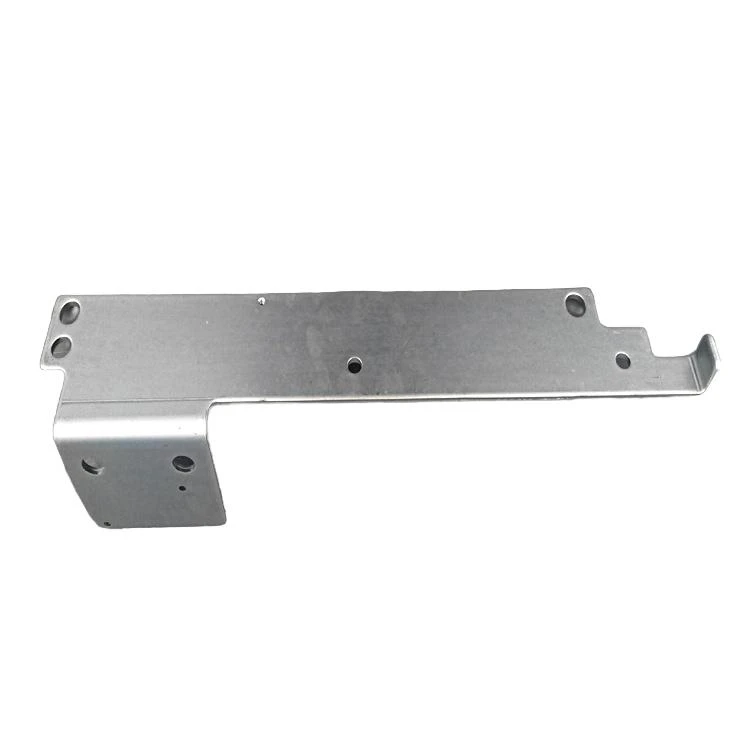Innovative Techniques in Abrasive Flow Machining for Enhanced Material Surface Finishing
A Comprehensive Overview of Abrasive Flow Machining
Abrasive Flow Machining (AFM) is an advanced material removal process that is particularly effective in enhancing the surface finish of complex geometries. This non-traditional machining process is widely utilized in various industries, including aerospace, automotive, and medical device manufacturing, due to its ability to achieve precise tolerances and an ultra-smooth surface. This article will delve into the principles of AFM, its operational mechanisms, applications, advantages, and limitations.
Fundamental Principles of Abrasive Flow Machining
Abrasive Flow Machining operates on the principle of using a viscous polymer-based media, loaded with abrasive particles, which flows through a workpiece's cavities and intricate passages. The process involves the controlled movement of this media against the surface of the material being machined. The rubbing action of the abrasives against the surface results in the removal of material, effectively polishing or deburring the workpiece.
AFM is typically performed under specific parameters, including pressure, temperature, and time, which directly influence the material removal rate and surface finish. The viscosity of the flow media serves as a crucial component in determining the efficiency and effectiveness of the machining process. By altering the abrasive type and concentration, operators can optimize the process for specific applications.
Operational Mechanisms
The AFM process consists of several key components the flow media, abrasive particles, and the fixture that holds the workpiece. Initially, the flow media is prepared with a blend of polymers, lubricants, and particular abrasives such as silicon carbide or aluminum oxide.
Once the media is formulated, it is loaded into a chamber, where it is subjected to controlled pressure. The fixture holding the workpiece is integrated into the chamber, allowing the media to flow around it. As the media is forced through the chamber, it interacts with the workpiece surfaces. The movement induces a combination of shear and compressive forces that cause the abrasive particles to abrade the surface layer of the workpiece, effectively smoothing and refining its finish.
The process is typically carried out in two main stages the forward stroke, where the media flows over the part to remove material, and the return stroke, which minimizes the wear of abrasives and redistributes the media for consistent performance.
Applications of AFM
Abrasive Flow Machining is particularly suited for applications that require complex geometries and tight tolerances. Its ability to finish parts with intricate shapes without the risk of damage makes it ideal for industries such as
abrasive flow machining pdf

1. Aerospace AFM is used to enhance the surface finish of turbine blades and other components, improving aerodynamics and efficiency. 2. Automotive Engine parts, such as valve bodies and fuel injectors, benefit from AFM’s capability to produce smoother surfaces that facilitate better fuel flow and reduced wear.
3. Medical Devices The process is increasingly used to finish surgical instruments and implants, where surface integrity is of utmost importance to ensure biocompatibility and performance.
4. Mold and Die Making AFM helps in removing burrs and providing fine finishes to molds, leading to improved product quality and reduced post-processing efforts.
Advantages and Limitations
The advantages of Abrasive Flow Machining include
- Versatile Material Removal AFM is effective on various materials, including metals, plastics, and ceramics. - Fine Surface Finish Capable of achieving high surface quality metrics, with Ra values as low as 0.1 µm. - Complex Geometries Ideal for hard-to-reach areas and complex shapes where traditional machining would fail.
However, there are limitations to consider
- Cost Initial setup and media costs can be significant, making it less feasible for small-scale operations. - Process Time Depending on the material and desired finish, the AFM process can be time-consuming compared to conventional methods.
Conclusion
Abrasive Flow Machining stands out as an essential technique in modern manufacturing, particularly for industries requiring high precision and surface quality in complex components. With continuous advancements in abrasive technologies and media compositions, AFM is poised to evolve further, meeting the demands of future engineering challenges and pushing the boundaries of machining capabilities.
-
Precision Sheet Metal Stamping Manufacturer | Fast & ReliableNewsAug.01,2025
-
OEM Sand Cast Pump Valve Fittings - Baoding Hairun Machinery And Equipment Trading Co., Ltd.NewsAug.01,2025
-
Custom OEM Impellers | High Efficiency & PrecisionNewsAug.01,2025
-
OEM Sand Cast Pump Valve Fittings - Baoding Hairun Machinery | Customization, Quality AssuranceNewsAug.01,2025
-
OEM Sand Cast Pump Valve Fittings - Baoding Hairun Machinery And Equipment Trading Co., Ltd.NewsAug.01,2025
-
OEM Sand Cast Pump Valve Fittings - Baoding Hairun Machinery And Equipment Trading Co., Ltd.NewsJul.31,2025















